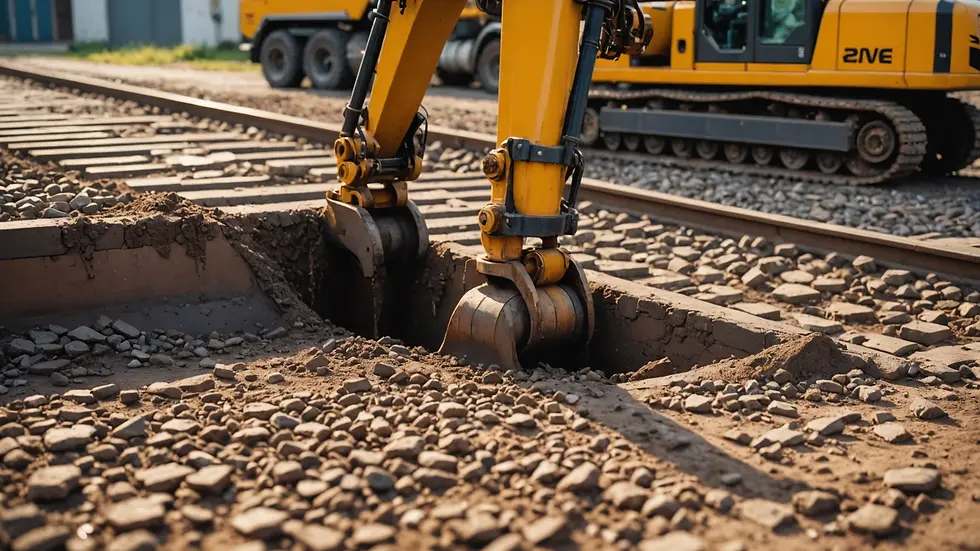Uncovering the Secrets of Reliable and Long-Lasting Concrete Foundations
- Reab Construction
- Nov 28, 2024
- 4 min read
Concrete foundations play a crucial role in construction, supporting everything from cozy homes to grand skyscrapers. A well-built foundation can mean the difference between a stable structure that lasts for decades and significant repair costs far down the line. For builders, homeowners, and architects, understanding how to create concrete foundations that endure is vital.
Understanding Concrete Foundations
Concrete foundations are specifically designed to evenly distribute the structure's weight above them while providing stability against various forces. They come in different types, such as slab, crawl space, and full basement foundations. Each type fits different climates and soil conditions. For instance, a slab foundation is perfect for a region with minimal frost while a basement foundation might be better suited for areas in need of extra storage.

Concrete itself is a blend of cement, water, and aggregates, which forms a strong material that increases in durability over time. The strength and lifespan of a concrete foundation depend not just on the mix, but also significantly on how well it is installed.
Common Types of Concrete Foundations
1. Slab Foundations
A slab foundation consists of a single concrete layer, usually about four to six inches thick, poured directly onto the ground. This economical option is well-suited for regions with minimal frost. However, it might pose issues in areas where the soil has drainage concerns, leading to potential moisture problems.
2. Crawl Space Foundations
Crawl space foundations elevate the home, offering ventilation and easy access to plumbing and electrical systems. This choice can prevent moisture buildup that often affects slab foundations. According to a study, homes with crawl spaces can reduce humidity by up to 20%, making them ideal in humid climates.
3. Basement Foundations
Basement foundations extend deeper into the ground, creating extra living space. Although they involve a higher construction cost—often 20% to 30% more than slab foundations—they offer valuable storage options and may improve energy efficiency by stabilizing indoor temperatures.
Factors Influencing Concrete Foundation Longevity
When designing a concrete foundation, several key factors can impact its long-term performance.
1. Soil Quality
The type of soil beneath your foundation is critical. Clay soils can expand when wet and shrink when dry, creating stress that may damage the foundation. On the other hand, sandy soils typically drain well but may not offer sufficient support. A foundation built on stable loamy soil reduces the risk of issues stemming from soil movement.
2. Moisture Control
It's essential to manage moisture around your foundation. Standing water can erode soil and create hydrostatic pressure against foundation walls. Installing effective drainage systems, such as French drains or gutters, can help prevent water pooling. In fact, homes with proper drainage systems can see a reduction in moisture-related damage by up to 40%.
3. Proper Curing
Curing involves maintaining moisture in freshly poured concrete to allow it to achieve maximum strength. Well-cured concrete can withstand cracking and other forms of damage. For example, ensuring adequate curing could improve durability by during the first few critical days post-pour.

Signs of Foundation Problems
Even the sturdiest concrete foundations might show wear over time. Look out for these common indicators of trouble:
1. Cracking
Cracks can arise from various issues, including ground settling or inadequate curing. While small hairline cracks might not need immediate attention, larger cracks—wider than a quarter of an inch—can threaten the foundation’s integrity.
2. Uneven Floors
If floors slope or feel uneven, this could signal that the foundation is settling improperly. It's crucial to have a professional evaluate this issue quickly to avoid further complications.
3. Mold or Mildew Growth
Mold or mildew in crawl spaces or basements often points to moisture issues, which can compromise the foundation's structure over time. In fact, over 50% of homes with basements experience moisture problems, highlighting the need for regular monitoring.
Maintenance Tips for Concrete Foundations
Once your concrete foundation is in place, consistent maintenance is essential for its longevity. Here are some effective strategies:
1. Regular Inspections
Periodic inspections of the foundation and surrounding areas help catch damage or moisture issues early. Early detection can save significant repair costs, as fixing a small crack is often much cheaper than addressing a serious foundational problem.
2. Control Vegetation
Roots from trees and shrubs can exert pressure on foundations. Ensure that plants are sufficiently far from the structure, ideally at least 10 feet away. Installing root barriers might also be necessary to protect your foundation.
3. Maintain Drainage Systems
Keep gutters, downspouts, and drainage systems clear. Regular maintenance prevents water from pooling around the foundation, reducing the risk of moisture-related damage significantly.

Final Thoughts on Concrete Foundations
Concrete foundations are the backbone of any construction. Recognizing the different types of foundations, understanding their performance factors, and being aware of potential issues is essential for builders, architects, and homeowners.
By taking a proactive stance in maintaining your concrete foundation, you safeguard your investment. With informed decisions and consistent care, you can ensure that your structures remain safe and durable for years to come. This commitment not only protects your property but also enhances the stability and longevity of the buildings we occupy every day.



Comments